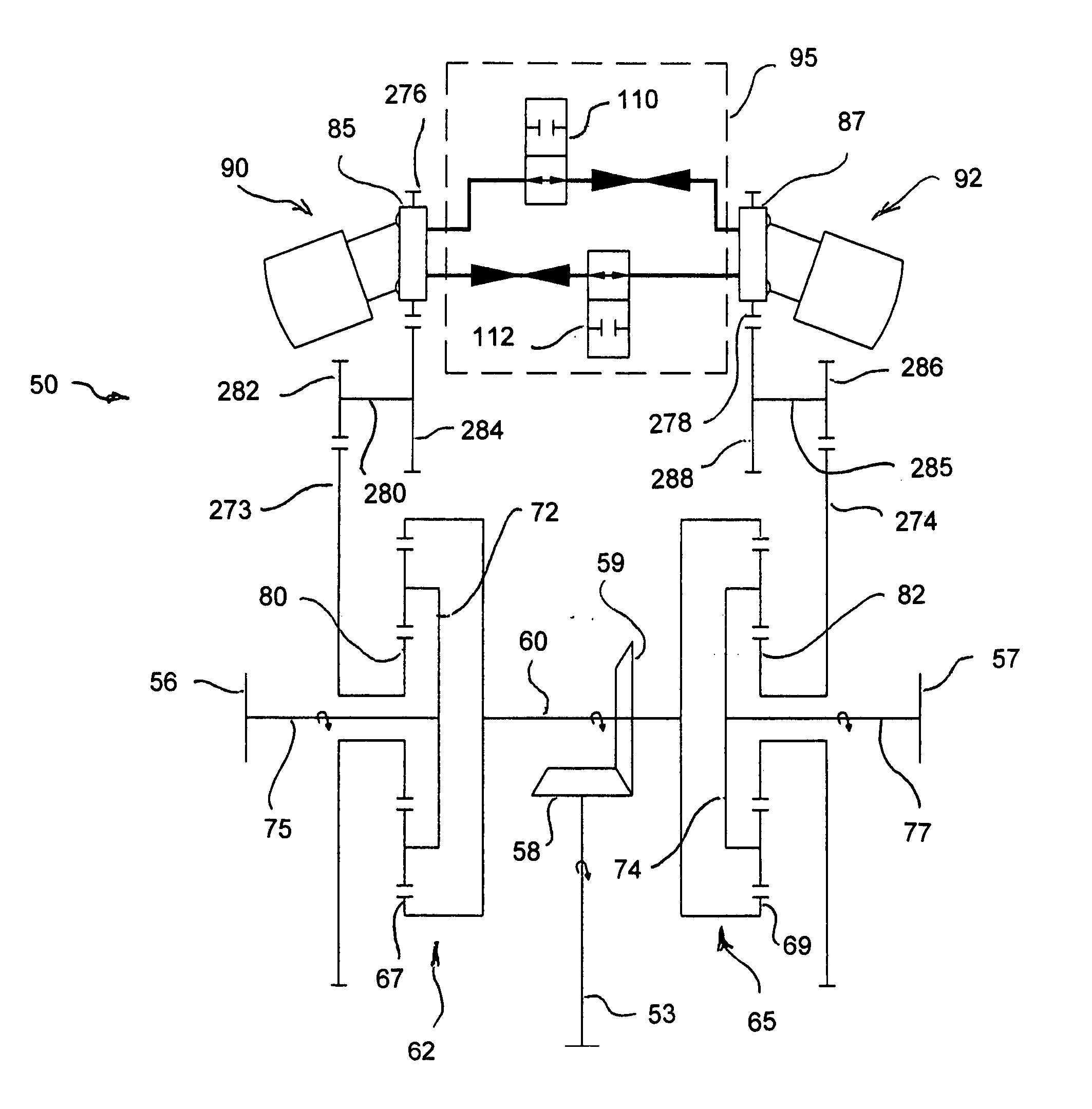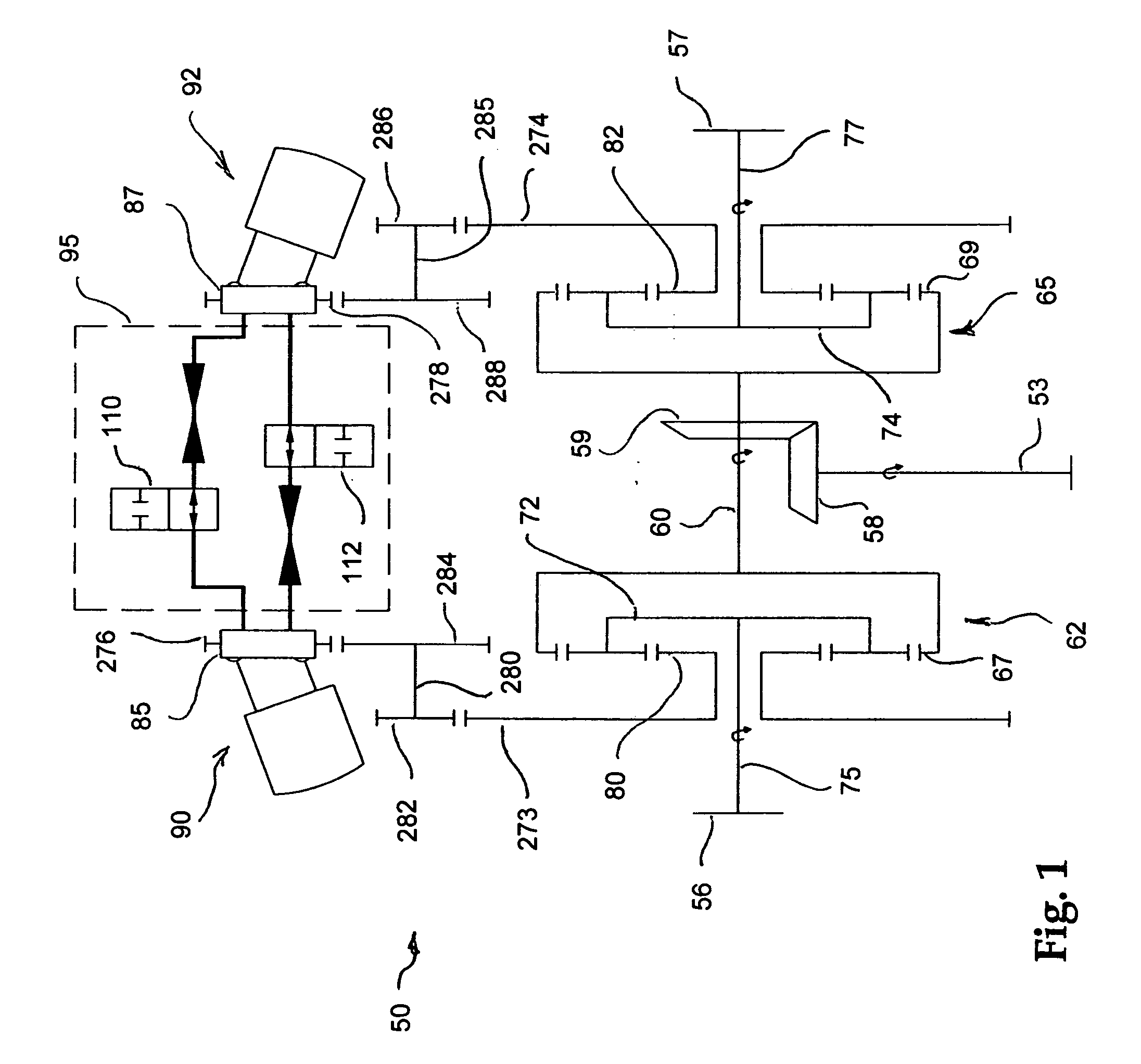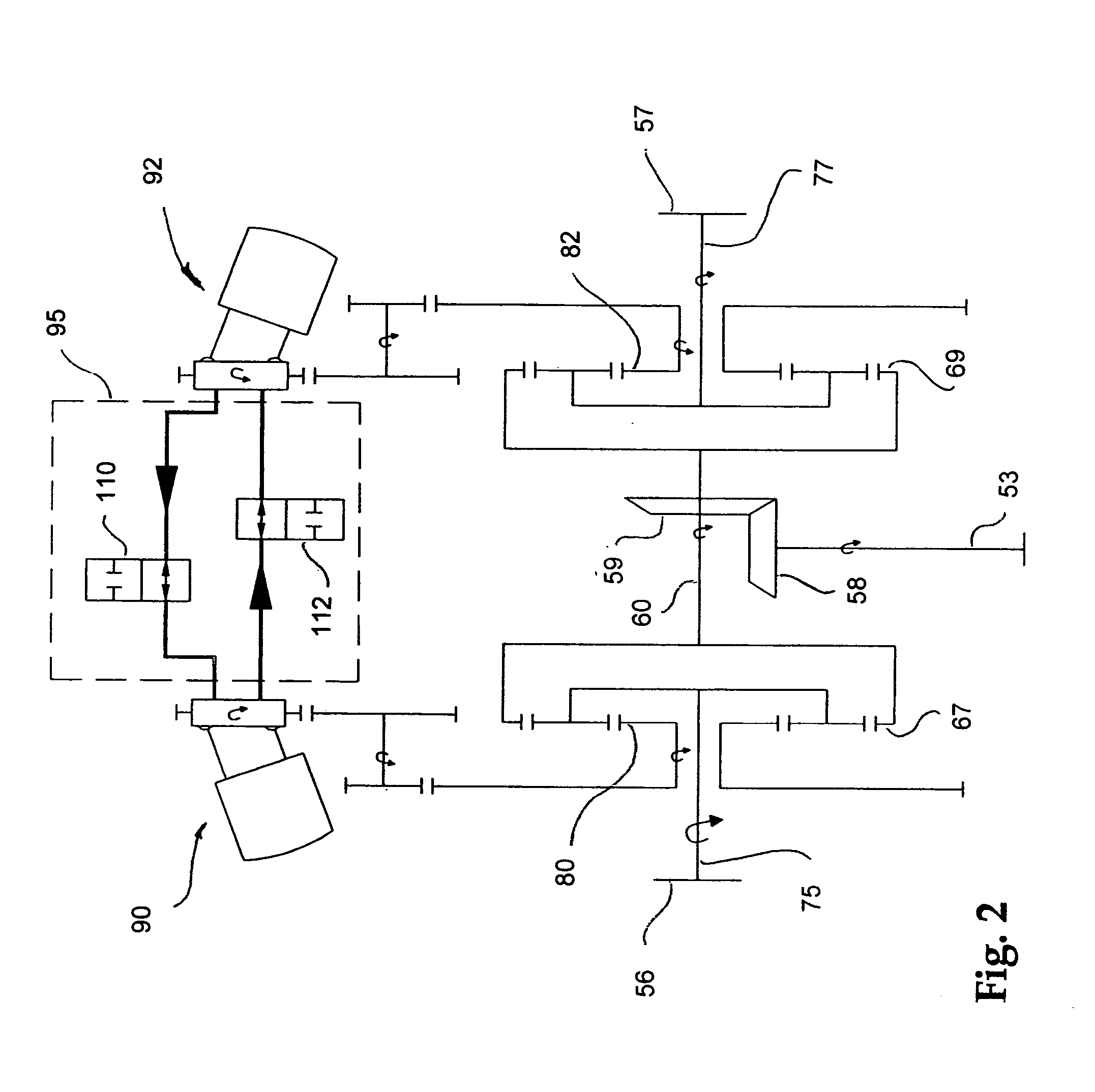Hydraulic torque vectoring differential
a technology of differential and hydraulic torque, applied in the direction of differential gearings, fluid gearings, non-deflectable wheel steering, etc., can solve the problem of very low differential parametric loss, and achieve the effect of being efficient, durable, and fully controllabl
- Summary
- Abstract
- Description
- Claims
- Application Information
AI Technical Summary
Benefits of technology
Problems solved by technology
Method used
Image
Examples
Embodiment Construction
Turning now to the drawings, wherein like reference numerals designated identical or corresponding parts, and more particularly to FIG. 1 thereof, a hydraulic torque vectoring differential 50 is shown schematically, coupling a vehicle drive shaft 53 to right and left wheels 56, 57. An input bevel gear 58 on the input drive shaft 53 drives a driven bevel gear 59 on a transverse shaft 60.
The opposite ends of the transverse shaft 60 are each coupled to and drive a ring gear 67, 69 of right and left epicyclic gear sets 62, 65, respectively. Each epicyclic gear set 62, 65 has a planet carrier 72, 74, respectively, coupled to a respective right or left hand wheel axle 75, 77, respectively, and each epicyclic gear set 62, 65 has a sun gear 80, 82 meshing with a torque plate 85, 87 of respective right and left rotating bent-axis hydrostatic units 90, 92 hydraulically coupled together through a center manifold 95 and mechanically coupled through the epicyclic gear sets 62, 65 and the tran...
PUM
 Login to View More
Login to View More Abstract
Description
Claims
Application Information
 Login to View More
Login to View More - R&D
- Intellectual Property
- Life Sciences
- Materials
- Tech Scout
- Unparalleled Data Quality
- Higher Quality Content
- 60% Fewer Hallucinations
Browse by: Latest US Patents, China's latest patents, Technical Efficacy Thesaurus, Application Domain, Technology Topic, Popular Technical Reports.
© 2025 PatSnap. All rights reserved.Legal|Privacy policy|Modern Slavery Act Transparency Statement|Sitemap|About US| Contact US: help@patsnap.com



